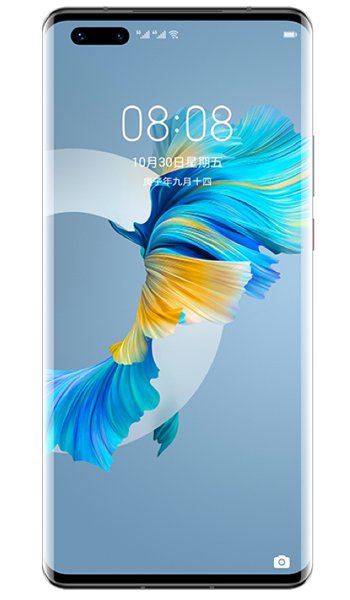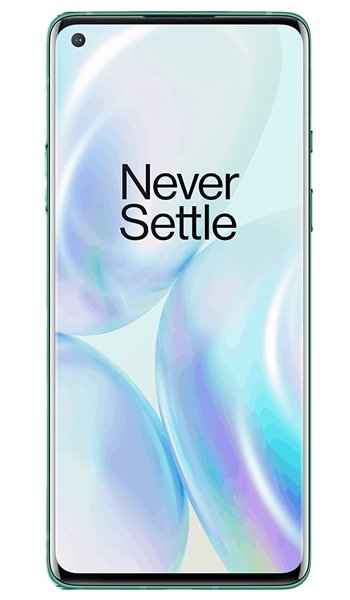Huawei Mate 40 Pro vs OnePlus 8 Comparison and Differences
Smartphone 1

Huawei Mate 40 Pro
Smartphone 2

OnePlus 8
Smartphone 3
Huawei Mate 40 Pro or OnePlus 8 Specs Comparison
or
 Common specs
Common specs
| Brand and model | Huawei Mate 40 Pro | OnePlus 8 | |
| Rating | (+) | (+) | |
| Release date | 2020, October 22 | 2020, April 14 | |
| Dimensions (HxWxD) | 162.9 x 75.5 x 9.1 mm | 6.41 x 6.41 x 2.97 in | 160.2 x 72.9 x 8 mm | 6.31 x 6.31 x 2.87 in | |
| Weight | 212 g | 7.48 oz | 180 g | 6.35 oz | |
| Body Build | Glass front, glass back, aluminum frame | Glass front (Gorilla Glass), glass back (Gorilla Glass), aluminum frame | |
| Case | buy from Amazon | buy from Amazon | |
| Colors | Mystic Silver, White, Black, Green, Yellow | Onyx Black, Glacial Green, Interstellar Glow, Polar Silver | |
| Battery | 4400 mAh, Li-Po, non-removable | 4300 mAh, Non-removable Li-Po | |
| Approximate price | 1200 EUR | 700 EUR | |
| Check price | from Amazon | from Amazon |
 Screen
Screen
| Technology | OLED | Fluid AMOLED | |
| Touchscreen | capacitive touchscreen | capacitive touchscreen | |
| Display colors | 16M | 16M | |
| Screen size | 6.76" in | 6.55" in | |
| Screen area | 115.7 cm2 | 103.6 cm2 | |
| Screen format | 18.5:9 (height:width) | 20:9 (height:width) | |
| Screen to body ratio | 94.1% | 88.7% | |
| Screen resolution | 1344 x 2772 px | 1080 x 2400 px | |
| Screen PPI /points per inch/ | 456 PPI | 402 PPI | |
| Screen protection | Corning Gorilla Glass | ||
| Other specs | - HDR10 -90Hz |
- HDR10+ -90Hz refresh rate |
|
| Screen protector | buy from Amazon | buy from Amazon |
 Camera and Video
Camera and Video
| Rear camera, main | 50 MP, Triple | 48 MP, Triple | |
| Camera specs | -50 MP, f/1.9, 23mm (wide), 1/1.28'', 1.22µm, omnidirectional PDAF, Laser AF -12 MP, f/3.4, 125mm (periscope telephoto), PDAF, OIS, 5x optical zoom -20 MP, f/1.8, 18mm (ultrawide), PDAF |
-48 MP, f/1.8, 25mm (wide), 1/2.0'', 0.8µm, PDAF, OIS -16 MP, f/2.2, 13mm (ultrawide), PDAF -2 MP, f/2.4, (macro) |
|
| Functions | Leica optics, LED flash, panorama, HDR | Dual-LED flash, HDR, panorama | |
| Video | 4K@30/60fps, 1080p@30/60/120/240/480fps, 720p@960fps, 720p@3840fps, HDR, gyro-EIS | 2160p@30/60fps, 1080p@30/60/240fps, Auto HDR, gyro-EIS | |
| DxOMark Main Score | 136 | ||
| DxOMark Photo | 140 | ||
| DxOMark Video | 116 | ||
| Front camera, selfie | 13 MP, Dual | 16 MP, Single | |
| Specifications | 13 MP, f/2.4, 18mm (ultrawide) TOF 3D, (depth/biometrics sensor) |
16 MP, f/2.0, (wide), 1/3'', 1.0µm | |
| Functions | HDR, panorama | Auto-HDR | |
| Video | 4K@30/60fps, 1080p@30/60/240fps | 1080p@30fps, gyro-EIS | |
| DxOMark Selfie Score | 104 | ||
| DxOMark Photo | 110 | ||
| DxOMark Video | 96 |
 Performance
Performance
| Operating system - OS | Android 10, EMUI 11, no Google Play Services | Android 10.0; OxygenOS 10.0 | |
| Chipset | - HiSilicon Kirin 9000 5G (5 nm) | - Qualcomm SM8250 Snapdragon 865 (7 nm+) | |
| CPU | - Octa-core (1x3.13 GHz Cortex-A77 & 3x2.54 GHz Cortex-A77 & 4x2.05 GHz Cortex-A55) | - Octa-core (1x2.84 GHz Kryo 585 & 3x2.42 GHz Kryo 585 & 4x1.8 GHz Kryo 585) | |
| GPU | Mali-G78 MP24 | Adreno 650 | |
| External memory | NM (Nano Memory), up to 256GB (uses shared SIM slot) | No | |
| Internal memory | 256GB 8GB RAM | 128GB 8GB RAM, 256GB 12GB RAM |
 Benchmark
Benchmark
| Antutu 9 Total | 637213 | ||
| Antutu 8 Total | 661059 | ||
| GeekBench 6 Single Core | 1179 | 1150 | |
| GeekBench 6 Multi Core | 3377 | 3076 | |
| GeekBench 6 OpenCL | 6451 | 2774 | |
| GeekBench 6 Vulkan | 6225 | 3004 | |
| GeekBench 5 Single Core | 940 | 907 | |
| GeekBench 5 Multi-Core | 3380 | 3326 |
 Communication and Connectivity
Communication and Connectivity
| SIM card | Single SIM (Nano-SIM and/or eSIM), Hybrid Dual SIM (Nano-SIM, dual stand-by), Dual SIM (one Nano-SIM, one eSIM, dual stand-by) | Dual SIM (Nano-SIM, dual stand-by) | |
| Network | GSM / HSPA / LTE / 5G | GSM / CDMA / HSPA / LTE / 5G | |
| Bands | -2G - GSM 850 / 900 / 1800 / 1900 - SIM 1 & SIM 2 (dual-SIM model only) -3G - HSDPA 800 / 850 / 900 / 1700(AWS) / 1900 / 2100 -4G - 1, 2, 3, 4, 5, 6, 7, 8, 9, 12, 17, 18, 19, 20, 26, 28, 32, 34, 38, 39, 40, 41, 42 -5G - 1, 3, 5, 7, 8, 28, 38, 40, 41, 77, 78, 79, 80, 84 SA/NSA/Sub6 |
-2G - GSM 850 / 900 / 1800 / 1900 - SIM 1 & SIM 2CDMA 800 / 1900 & TD-SCDMA -3G - HSDPA 800 / 850 / 900 / 1700(AWS) / 1800 / 1900 / 2100 -4G - LTE band 1(2100), 2(1900), 3(1800), 4(1700/2100), 5(850), 7(2600), 8(900), 12(700), 13(700), 17(700), 18(800), 19(800), 20(800), 25(1900), 26(850), 28(700), 32(1500), 34(2000), 38(2600), 39(1900), 40(2300), 41(2500), 42(3500), 46(5200), 66(1700/2100) - EU -5G - 5G band 1(2100), 3(1800), 7(2600), 28(700), 78(3500); SA/NSA - EU 5G band 2(1900), 5(850), 41(2500), 66(1700), 71(600); SA/NSA - NA 5G band 78(3500); SA/NSA - IN 5G band 41(2500), 78(3500), 79(4700); SA/NSA - CNmmWave - Verizon exclusive |
|
| Speed | HSPA 42.2/5.76 Mbps, LTE-A, 5G | HSPA 42.2/5.76 Mbps, LTE-A (5CA) Cat18 1200/150 Mbps, 5G 7.5 Gbps DL | |
| GPRS | Yes | Yes | |
| Edge | Yes | Yes | |
| Wi-Fi | Wi-Fi 802.11 a/b/g/n/ac/6, dual-band, Wi-Fi Direct, hotspot | Wi-Fi 802.11 a/b/g/n/ac/ax, dual-band, Wi-Fi Direct, DLNA, hotspot | |
| GPS | Yes, with dual-band A-GPS, GLONASS, BDS, GALILEO, QZSS, NavIC | Yes, with dual-band A-GPS, GLONASS, BDS, GALILEO, SBAS | |
| NFC | Yes | Yes | |
| USB | USB Type-C 3.1, USB On-The-Go | 3.1, Type-C 1.0 reversible connector, USB On-The-Go | |
| Bluetooth | 5.2, A2DP, LE | 5.1, A2DP, LE, aptX HD |
 Music and Audio
Music and Audio
| Radio | No | No | |
| Headphone jack | No | No | |
| Others | - 32-bit/384kHz audio |
 Other features
Other features
| Sensors | - Face ID, fingerprint (under display, optical), accelerometer, gyro, proximity, barometer, compass, color temperature sensor , Infrared port | - Fingerprint (under display, optical), accelerometer, gyro, proximity, compass | |
| Other extras |
- Fast charging 66W -Fast wireless charging 50W -Reverse wireless charging 5W - IP68 dust/water resistant |
- Fast charging 30W, 50% in 22 min - IP68 dust/water resistant (up to 1.5m for 30 mins) |
Reviews and Opinions on Huawei Mate 40 Pro and OnePlus 8
If you had to recommend one of these phones to a friend, which one would it be and why? Share your arguments using the Add Opinion button!
